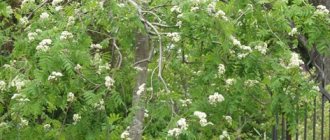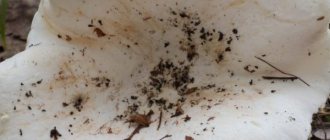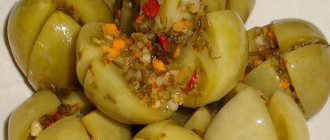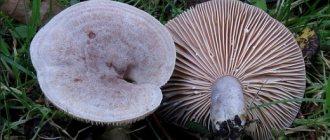After cutting down a tree, a stump remains, which also needs to be removed. There are different ways to eliminate plant remains. Mechanical techniques require serious physical effort and even material costs. If uprooting is not suitable for some reason, there are proven chemical methods for removing stumps. They will cost much less and will not require the use of specialized equipment.
How to remove a stump without uprooting ? If you are faced with the destruction of a nuisance tree for the first time and don’t know what to do correctly, this will help. We offer many services and will help you remove a stump on your property without uprooting it. We consider each situation individually, selecting the best methods and technologies.
Choosing the best option for stump removal
The part of the trunk and root remaining after cutting down the tree, if desired, can not be removed; they can serve as an unusual attractive element of the decor of the site.
In particular, they can be used as a support for climbing plants; they can be used to make a decorative table or bench; other, no less original options are possible. The choice is often dictated by the design features of the garden or the entire site.
Landscape designers generally recommend not getting rid of stumps, but collecting the most attractive specimens of them and creating rutaria, i.e. root gardens. If you approach this option with imagination, then a composition created on the basis of not uprooted remains of cut down trees can become the highlight of a landscape garden.
But if the old tree was infected with pests or diseases, then removing the stump is a mandatory procedure. Even a small part of it left in the ground can become a source of infection of all plants on the site.
In a small garden, leaving stumps from old trees is also not rational - they will take up too much space.
Biological method
A time-consuming, but completely safe, biological method of stump removal is based on the destruction of the tree by natural mycelium. To implement this method, you need to use an ax to form 5-8 deep cracks on the stump. In these cracks you should place a fruit-bearing layer of soil from the forest, in which there is a mycelium of honey mushrooms or oyster mushrooms. For planting oyster mushrooms, you can use ready-made mycelia. Mushroom mycelia are watered and covered with moss, as well as a layer of fallen leaves with soil. If carried out correctly, the mycelium will begin to bear fruit, and after 3-4 years it will destroy the stump.
The choice of method for getting rid of tree roots depends on the owner of the site and his capabilities, but in principle this issue is completely solvable. The most effective way to remove an entire tree is demonstrated by professional foresters: they cut down the tree immediately with a depth of at least 10 cm below ground level, and then fill the cut area with soil. After 1-2 years, the roots of the tree rot on their own.
In what cases is it possible to use special equipment?
Which removal methods are best to resort to is not an easy question. Of course, if the tree to be removed is large, you can attract specialists and equipment, but it is only possible to lean towards this option if the site is of a substantial size and there are no buildings or young plantings on it.
From a cost point of view, this option is only justified if you need to remove a lot of trees or stumps. Typically, this method is used if it is planned to develop a plot previously allocated for growing fruit or ornamental trees.
What is it for?
In order for the site to please its owners with a well-groomed appearance, it is necessary to trim the bushes in a timely manner, and, if necessary, remove them entirely. This could be due to several situations.
When planning construction
If the bushes interfere with construction work, they are removed or carefully transplanted to another, more convenient place. The rhizomes are completely pulled out, and the remaining holes are carefully filled up.
When located under power lines and near communications
Large bushes can disrupt power lines or block access to them. In this case, they are cut off or cut down completely. The work must be carried out by specialists.
Close to home
Such bushes pose a danger to the integrity of the house and its foundation. Roots can penetrate walls, destroy the foundation and significantly reduce the lifespan of a home. Plants are carefully uprooted using special equipment.
For large bushes
Heavily overgrown shrubs can block the view if located at the exit from the site. A large number of dry branches and location near a residential building becomes an additional risk of fire. In this case, the bushes are trimmed or removed entirely.
Shrub age
If berry or ornamental shrubs have become “old” and cannot produce the same yield and flowering, they are replaced with new ones, after removing the old ones.
See also
The best ways to get rid of wood sorrel on your propertyRead
Changes in landscape design
Ornamental bushes that do not fit into the design of the site or drown out other plants are uprooted, replanted or pruned.
Manual uprooting - pros and cons
Before deciding to uproot a stump manually, you should evaluate your strength and acquire auxiliary tools. The use of this method will not require financial costs; the work can be completed within one or two days, but it will require considerable physical effort.
Strong arguments in favor of manual uprooting include:
- very limited space for action
- close placement of vegetable beds, buildings, trees
- uprooting young trees whose roots have not yet grown very much
There are times when special equipment cannot be fitted, chemicals or fire cannot be used, and manual labor will have to be used. But this method is considered outdated today.
Under certain conditions, experts still recommend using chemical reagents to remove stumps.
General description of the method and the necessary tools
The principle is very simple - forming a candle from a stump. To do this, you will need to drill a hole in the center of the object being burned, where the wick will be placed for the initial fire, and also provide the latter with oxygen access. And then the fire will completely burn out the stump from the inside.
By the way, this method works with both dry and wet hemp of any size. The combustion rate will be slightly different, but this will not affect labor costs in any way.
To work you will need:
- An electric drill or hammer drill with a long wood drill with a larger drill bit diameter of 40-50mm is quite suitable.
- Liquid for lighting fires with a volume of 100-200 ml. Almost any flammable mixture will be suitable for this purpose, be it kerosene, diesel fuel or machine oil.
- Cotton wick about 30cm, - a strip 2-3cm wide, cut from a rag, will do
That's all you need for this “labor-intensive” task... although no, you also need matches or lighters.
Chemical removal of tree roots
The point is that wood, under the influence of chemically active substances, quickly turns into dust, which greatly simplifies the process of cleaning the area from stumps.
The following chemical agents are used:
- salt
- saltpeter
- urea
It is recommended to plan planting in place of the removed stumps no earlier than in a couple of years; they will be needed to completely destroy the wood.
How to burn out a stump using saltpeter
Sodium or potassium nitrate can be used as a chemical reagent. Their penetration deep into the wood will lead to the complete destruction of the tree's crown system, regardless of its size. It should be taken into account that saltpeter will ultimately penetrate deep into the soil along the root and accumulate in it.
The task is to drill several holes on the surface of the hemp, 35-40 cm deep and 1 cm in diameter. At least 100 g of saltpeter is poured into each of them. Next, add water.
It is best to close the holes tightly with wooden plugs so that the saltpeter is not washed out by rain. If this procedure is carried out in the summer, then in the spring of next year you can start burning the stump.
With the onset of heat, the holes are opened and gasoline is poured into them, then set on fire. Be sure to follow safety precautions!
Since nitrate releases oxygen as a result of exposure to high temperatures, the flame actively spreads in the soil, and even small roots burn.
We should not forget that it is strictly forbidden to use saltpeter for uprooting stumps in peat soils. Such actions may cause a fire!
The advantages of the method include:
- pretty quick results
- shoots do not appear from the roots
- minimal labor costs
The costs will not be that much; you just need to purchase saltpeter at a specialized gardening store.
Possible problems
If difficulties arise with removing bushes, traditional methods are used:
- darken the location of the roots with film or cardboard, which leads to their gradual death and drying out of the entire plant;
- bury slate sheets on 4 sides of the plant, after a while remove the bush from the ground along with the roots;
- cover the ground with salt.
When working with chemicals and herbicides, you should follow safety precautions - use protective clothing and follow the instructions for use of the drug.
How to remove stumps with urea, what are the advantages
The work is performed in the same way as when burning with saltpeter. More holes will make the chemical work faster. This method is not associated with danger; there is no need to set fire to the stump. It will simply decompose from exposure to urea. Sprouts will not appear from the root.
Such an object can be covered with soil and a tree or bushes planted nearby. Decomposed wood and urea accumulated in the soil will be excellent sources of nutrition for them.
The advantages of using urea are obvious:
- no brute force required
- the soil is not contaminated with chemicals
- the remnants of the root system are completely removed
You can use the option of removing stumps with urea on any type of soil, including peat.
Security measures
Taking into account the fact that ammonium and potassium nitrate are classified as explosive flammable substances, work with it must be done with extreme caution. Smoking is prohibited when using it. Within 1-3 months after filling the holes with reagents, processes begin to actively occur in the wood, resulting in the release of flammable gases. If you ignore recommendations regarding lighting a fire or smoking near the treatment site, you can provoke negative consequences - an explosion, a fire.
In order to prevent the tree frames and their root system from flaring up when burning, a shaft of earth about 50 cm high should be built around it. It is not recommended to move away for a long time from the place where the stumps are destroyed, otherwise a spark may shoot out at any moment and fall within 5-10 m from processing zones.
There must be a fire extinguisher nearby. A garden hose connected to a water supply will also work. If such means are available, then it will be possible to cope with the fire at the very beginning. It is also dangerous for a person to be on the leeward side of a burning stump, since it emits harmful substances during the combustion process.
You cannot pour into the holes, even in large or small quantities, products where the active ingredient is glyphosate (Typhoon, Roundup, Santi). They destroy wood completely, but are not able to decompose in the ground. Through plants and their fruits, they enter the human body and cause serious harm to his health.
Removing stumps using saltpeter is effective and quick. This is a simple way to combat them, which does not require the use of physical effort. The main thing is to follow the basic recommendations and observe safety measures.
How to get rid of tree stump without uprooting, using table salt
To destroy tree roots, it is not necessary to buy special chemicals; you can use those products that are used in household use. Let's figure out how to turn a stump into dust using ordinary salt.
The procedure is as follows:
- in the fall you need to drill holes in the stump and add salt; one stump will require up to 300 g of salt
- then add as much water as you can into the holes
- cover the stump with soil on top
The decomposition process will take about a year; a stump treated in the spring will be completely decomposed by next spring. We should not forget that removing stumps with salt is a process that causes soil clogging; for several years, vegetables or flowers cannot be planted in the place of the former stump.
The positive aspects include the low cost of the method and the ease of its implementation, but the negative aspects will be:
- Soil pollution
- long period of wood decomposition
Scattered salt does not bring good luck
An interesting fact is that stumps can be removed using ordinary salt. You will need a concentrated solution with salt.
After preparing the solution, you should water the soil around the stump. The stump will die.
Experienced gardeners do not recommend using this method, because it almost completely destroys all useful substances and minerals in the soil watered in this way. All plants that grow nearby also die.
In general, it must be said that it is better to remove stumps for those summer residents who do not like to experiment and prefer the classics. For lovers of novelty and originality, tree stumps can be an ideal solution for creating flower beds and garden decorations.
Instead of uprooting we use herbicides
If the stump is of impressive size, you can attempt to remove it using herbicides, take the most popular Roundup or Tornado.
The operating procedure is as follows:
- the top of the stump is cut down at such a height that a fresh cut is obtained
- the resulting surface is filled with herbicide
- the entire stump is tightly wrapped with plastic wrap
You can begin removing the decomposed rhizome next summer, i.e. in about a year.
The method is quite simple and effective, the costs will not be significant for the purchase of herbicide and plastic film.
Non-standard, but quite effective options
When discussing options for turning a stump into dust, you should remember other methods; they are not used so often, but they give good results.
Using water
You can even get rid of an old stump with water. Before the onset of winter frosts, the wood is watered generously. Under the influence of negative temperatures, the water that has soaked the wood crystallizes, increases in volume and tears the stump from the inside.
By spring, the stump usually decomposes to such an extent that it is easily pulled out from the ground, with minimal effort being applied.
The second method, using water, will require digging a hole about half a meter away from the stump to be removed. With good pressure, water is supplied from the hose to the root, quickly washing it out of the soil. The dirt flows into a hole prepared in advance.
As a result of such actions, the roots will be cleared of the soil. Next, you just need to chop them with an ax and pull the remains of the wood to the surface.
Turning a tree stump into a mushroom growing area
Cuts are made in the remains of the tree trunk and filled with spores of honey mushrooms or oyster mushrooms. After abundant watering of the stump, it is wrapped in film for the whole winter.
In the spring you will be able to collect a good harvest of mushrooms. You can use stumps in this way for 4-5 years, during which time they will completely dry off. They can then be removed from the soil without much effort.
Using this option, you can get double benefits, and without any special financial expenses.
We use waste machine oil
Let's look at how to destroy a stump using mining. The stump will first need to be dug to a depth of 15-20 cm.
Remove the bark from the trunk, grease it with mining and attach it back to the trunk, then sprinkle it with soil.
It may take several years to destroy a stump using this method.
We grow new trees in place of old stumps
Experienced gardeners use this method to grow young trees in place of old ones. Using a chainsaw, the stump is cut off at ground level, a depression is made in the trunk, complex mineral fertilizers are applied and a seedling is planted.
As the roots of the young plant develop, they destroy rotten wood and obtain fertilizer from it.
In just a few years, we get a strong, new tree in place of the old plant.
Using a chainsaw
Using a tool, remove all accessible fragments of the rhizome. The method is cheap and not complicated, but not very effective and can be used as a temporary measure. Usually, soon after such work, young growth appears.
Stump grinder
This special tool is capable of destroying wood to a depth of 40 cm, while the roots of nearby plants are not damaged. The work is done quickly.
The device itself is small in size. Wood is crushed by milling. The root crusher is more difficult to use if the stumps have a very large diameter.
But with such obvious advantages, the device has no less significant disadvantages - a very high cost, even renting such a unit is not a cheap pleasure.
If buying a chopper is a done deal, then you should contact stores that specialize in selling gas mowers, chainsaws and other similar equipment, or place an order online.
Stump uprooting and physical removal
The problem with the stumps of cut trees is much easier to solve than carefully removing the roots, taking care of the health of the living plant. If the remains of the wood do not interfere, this is, of course, good. But, if you need to completely clear the area for planting crops, you should get rid of the stump. Luckily, there are many different methods to choose from. One method of removing stumps is to uproot them.
Uprooting a tree stump is not easy; the process is labor-intensive, so you will have to put in a lot of effort to achieve what you want.
Uprooting is a method that is suitable if the roots are not too deep and the size of the tree itself is average.
It is much more difficult to get rid of the stump of a large plant on your own; you will not be able to do it without the help of specialists or the necessary equipment.
If you plan to remove a large tree, you first need to cut down its trunk, and only then proceed to removing the stump. Without fail, the height of the stump must be 0.9-1.2 meters. In this case, it will be convenient to pull the stump out of the ground either manually or with a tractor.
So, to uproot a small or medium stump, follow the step-by-step algorithm:
- First of all, you should dig a deep trench, the depth of which will be at least one meter.
- Destroy the side branches of the root system. For this you will need a bayonet type shovel and an ax.
- For further manipulations you need a crowbar. It should be brought under the stump, and then the rest of the tree should be shaken from side to side.
- As the stump sways, the lower shoots will be exposed, which need to be cut off with a shovel.
- After removing the branches, the remains of the trunk become free and can be removed from the recess.
By following five simple rules, you can get rid of a stump. If it is large, it will hardly be possible to uproot it. In this case, you need to act differently, using special equipment. The algorithm of actions is as follows:
- Again, you first need to dig out the stump. Digging is done using a shovel, crowbar, hoe or excavator - depending on what tools are available. Next, you need to get rid of the largest roots using an ax or saw. After this, you need to dig a hole around the stump, the diameter of which will be at least 1.2 meters, and preferably wider. This is necessary so that the main rhizome can be removed from the soil. Next, you should water the soil with a strong stream of water. High pressure will make more roots visible.
- After the stump is dug, a winch must be attached to it. To fix it conveniently, you need to cut down the tree trunk, leaving a stump one meter high. The second edge of the winch should be attached to a tractor or other sufficiently strong vehicle, preferably a truck.
- Pull out the stump with a winch, but do it very carefully so that it does not fly out of the ground with force. In order for the stump to be removed calmly, it is necessary to pull it out with slow and short jerks. If using a truck, tighten the winch first, then loosen it. Repeat the steps one by one until the stump comes out of the ground and falls on its side.
- Finally, all that remains is to fill the resulting hole with soil. You can immediately plant any plant in this soil, for example, flowers or vegetables. Pour the seeds and water them. It is necessary that the land is not empty. Even if there are small tree roots left in the soil, they will die over time. You can even plant the vacated area with grass.
If the methods listed above do not work, you can get rid of most of the stump by simply grinding it down. To do this, you will need a chopper, which you don’t have to buy; you can just rent it. You can grind down the stump yourself, or you can call a specialist. It should be said that the procedure is not easy.
If you plan to sharpen the stump yourself, be sure to follow safety precautions: always wear safety glasses, or better yet, along with gloves (this is more for convenience).
When working with the shredder, you must adhere to the following rules:
- the ground near the stump should be clear of stones and other debris so as not to damage the device’s disks;
- place the milling disc at a distance of 5-10 centimeters from the front edge of the stump;
- after turning on the rotation of the disk, you need to slowly lower it so that it enters the stump approximately 7-8 centimeters;
- it is necessary to slowly and carefully move the disc from side to side so that approximately 10 centimeters of wood are sanded;
- after this, you can move the disk and grind the next section of the stump;
- Grinding should continue until the top edge of the stump is at ground level or below.
After these actions, the roots will remain in the ground, and you should be prepared for the possibility of new shoots appearing. Some trees do this. We are talking about cherry, plum, lilac and elm. And trees such as black locust, aspen, sumac and poplar form clonal colonies, meaning the roots of several plants are intertwined. The shoots that appear after grinding down the stump can be eliminated, but it is better to immediately destroy all the roots in a comprehensive manner.











